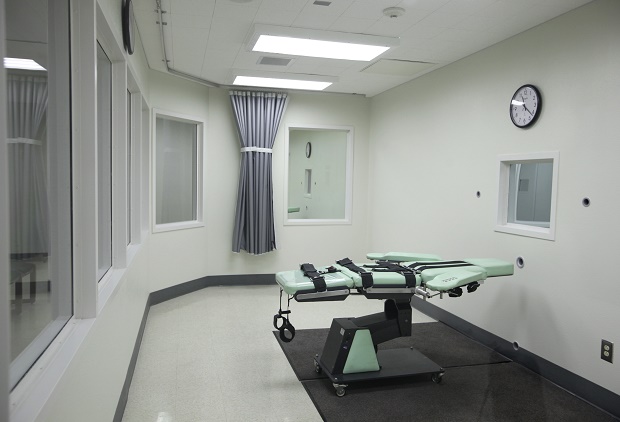
This Sept. 21, 2010, file photo shows the death chamber of the new lethal injection facility at San Quentin State Prison in San Quentin, Calif. California proposed Friday, Nov. 6, 2015, to allow corrections officials to choose one of four types of barbiturates to execute prisoners on death row depending on whats available, as states deal with a nationwide shortage of execution drugs. AP File Photo
LOS ANGELES, United States—California authorities proposed Friday a new method to execute inmates by lethal injection, potentially allowing the US state to resume capital punishment nearly a decade after legal challenges halted the practice.
The California Department of Corrections and Rehabilitation (CDCR) proposed a single-drug approach to executions in response to objections that the standard three-drug protocol was prone to failure, exposing inmates to a potentially agonizing death in violation of the US Constitution.
California has by far the largest number of death-row inmates—747—of any state, followed by Florida and Texas. Its last execution was in 2006.
Michael Angelo Morales, who was convicted of raping and murdering a young woman, has since challenged the three-drug approach, saying it could inflict “cruel and unusual” punishment in violation of the Eighth Amendment of the US Constitution.
The proposed approach would provide “safeguards to ensure the execution comports with the Eighth Amendment,” CDCR said.
Several other states have adopted one-drug protocols, but executions have slowed dramatically in recent years—and been suspended in some states.
The slowdown was triggered by objections like those of Morales, botched executions and difficulties in obtaining the needed drugs, which European drugmakers now refuse to supply.
California would not be relying on the same drug in every case but rather would select from one of four barbiturates, to be injected in 7.5-gram doses, depending on individual situations.
But even if the new approach is approved, it would probably be at least a year before executions could resume.
The proposal will be open for public comment for 75 days, with a public hearing set for January 22. State agencies would have about a year to promulgate the necessary laws.
Even then, “it is premature” to assume that executions would resume immediately, CDCR spokeswoman Terry Thornton told AFP.
Other challenges to capital punishment are moving through the courts.
A year ago a federal court in California declared the state’s entire death-penalty system “dysfunctional,” saying it amounted to “mental torture” that appeared to violate the US Constitution.
Of the 50 US states, 31 practice the death penalty and 19 have abolished the punishment.
RELATED STORIES
Executions, new death sentences in US continue to fall
Ohio’s lack of lethal drugs highlights death penalty dilemma